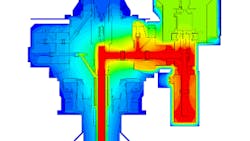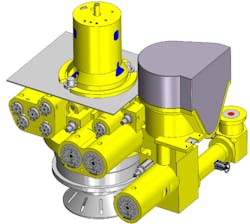ADIPEC 2023: Digital tools calculate number of anodes required, placement on subsea tree
Offshore staff
Element Digital Engineering’s Principal Engineer & Electromagnetic Capability Lead, Dr. Richard Chippendale, believes that innovations in the anode specification process can provide better cathodic protection for subsea trees.
Cathodic protection is often based on conservative assumptions and estimates, leading to inefficient protection from either too few or too many anodes. Therefore, Element Digital Engineering will be showcasing at ADIPEC how the use of emerging digital engineering technologies can help improve decision-making in the design process, leading to both cost and time savings.
“Early failure is something that can be avoided through better specification. If designers neglect this, it could mean that repairs will need to be made sooner than expected, which, due to the deepsea nature of subsea trees, will incur significant MRO cost," Dr. Chippendale said. "This is why digital tools are transforming how subsea tree projects are designed. They allow engineers to model and simulate how a system will perform, and more accurately calculate the amount of anodes required and where on the tree they should be positioned. Choosing this route results in a more efficient system, whilst also reducing both costs and the need for increased maintenance.”
For more information, visit Element Digital Engineering at ADIPEC booth CN31-1.
09.26.2023

